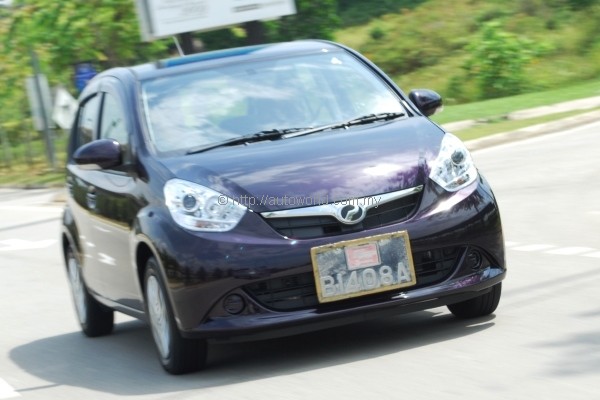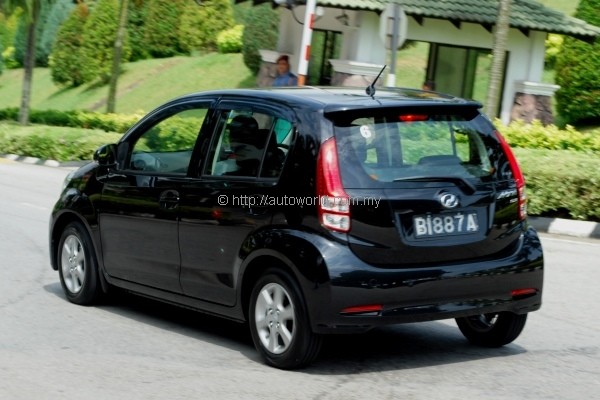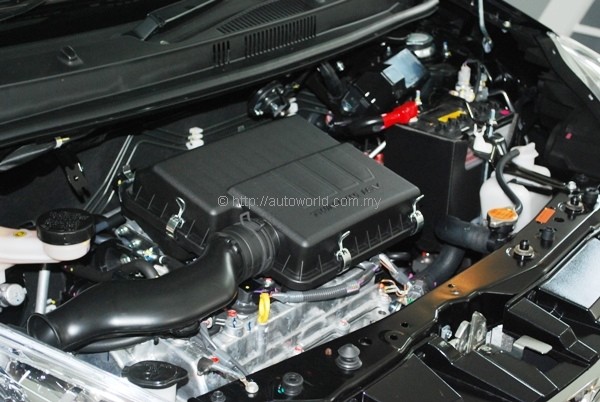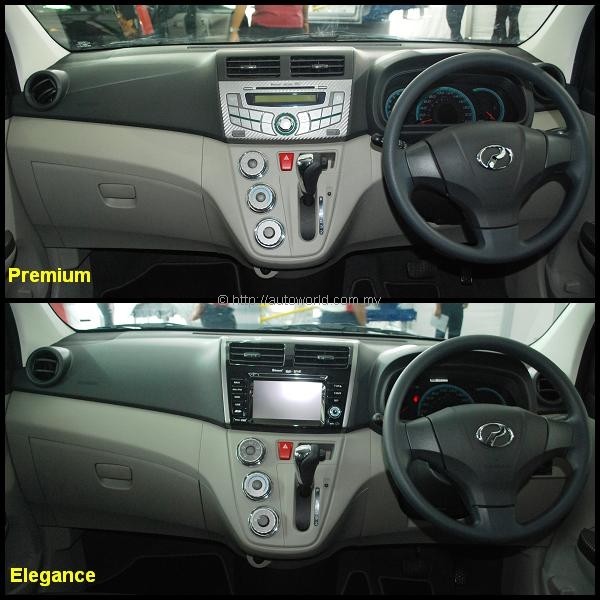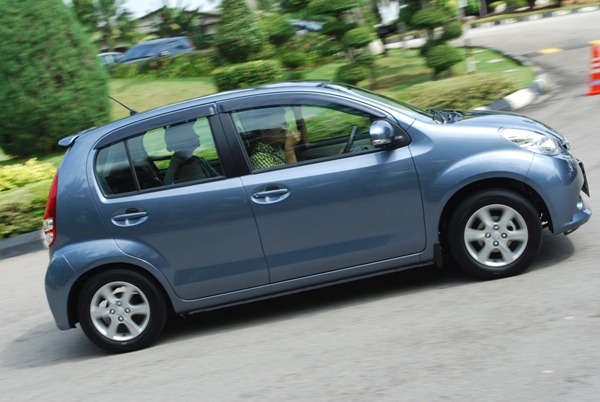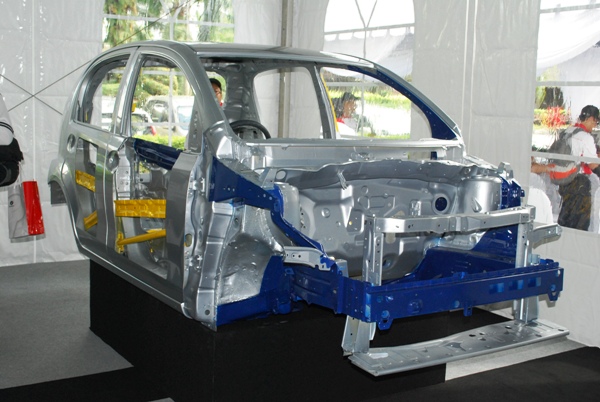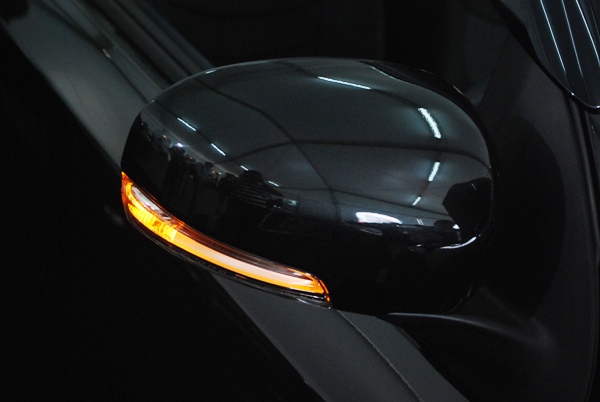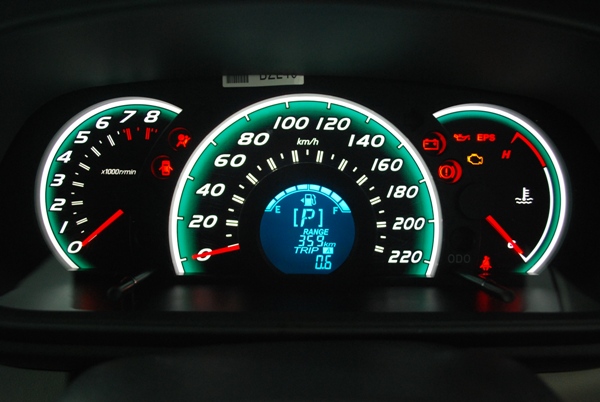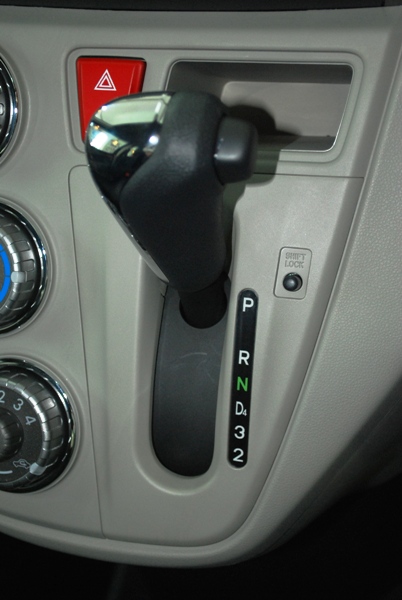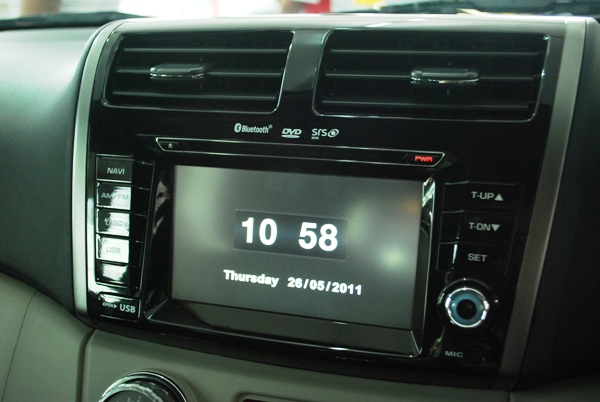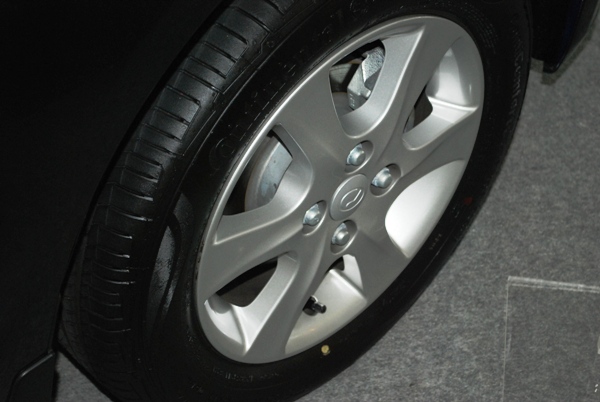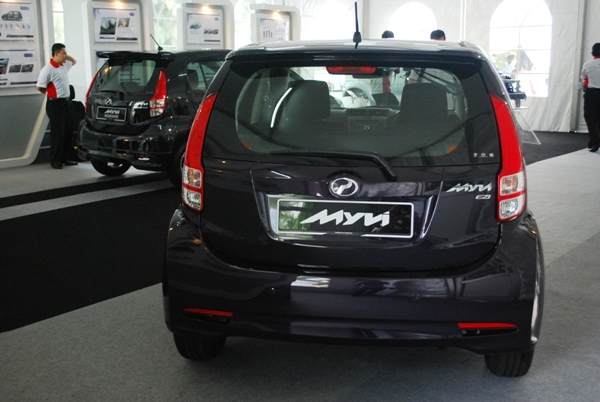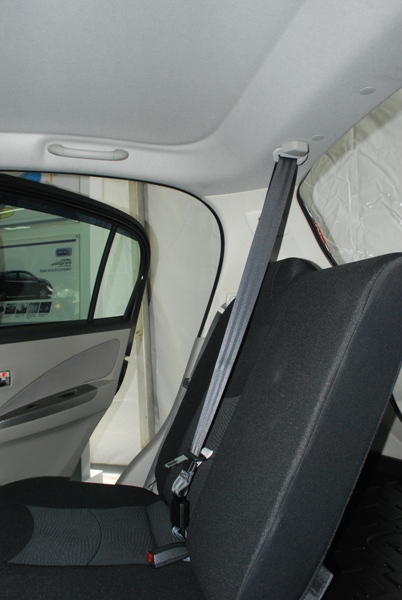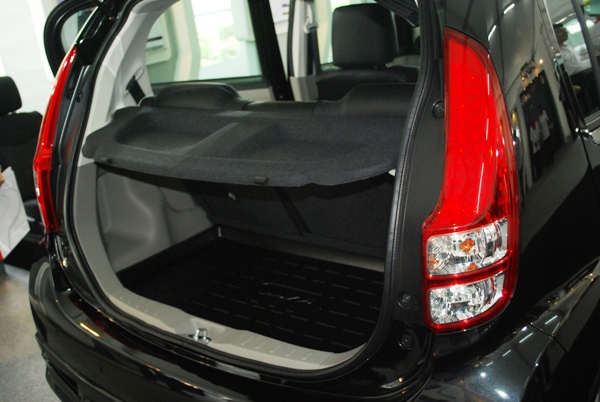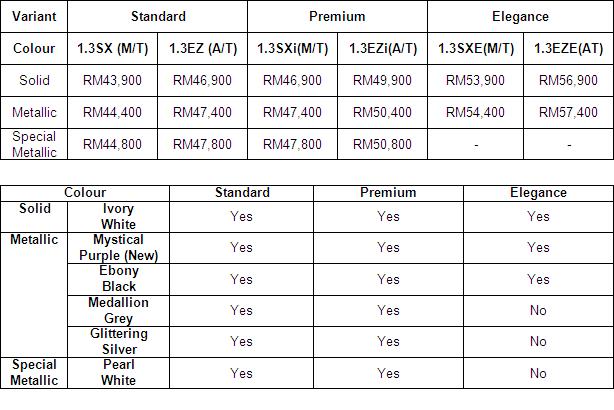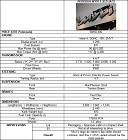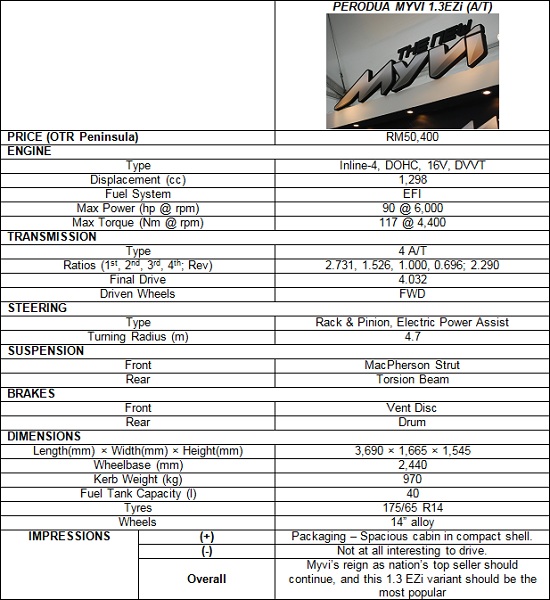NEW Perodua Myvi launched – Brief Driving Impressions
Malaysia’s best-selling model for the past five years, the Perodua Myvi, has a new heir to its throne with a new replacement model unveiled today at the Putra World Trade Centre, Kuala Lumpur. Launched in May 2005, the Myvi was facelifted in August 2008, with various special and limited editions introduced in between.
Averaging sales of 81,200 units per year, Perodua has sold about 487,400 units of the Myvi up till April 2011 when production of the old model stopped to make way for its replacement. In addition to being a sales success, the Myvi has picked up no less than 15 awards during its six years in the market, with two trophies at the CIMB Autoworld Car of the Year Awards 2010 among them.
Developed at a cost of RM220 million, production of the new Myvi was nearly delayed by effects of the Japan earthquake earlier this year, with the required supply of ECU, brakes, automatic transmissions and paint being put into question at one point. Perodua was eventually able to get things moving, but full normalcy will only resume by July based on current estimations.
Several weeks ago, Perodua held a short preview of the new Myvi in Cyberjaya, where members of the media were given a full technical briefing of the car. Those present also had the opportunity to test drive the new Myvi over short distances to get some early impressions.
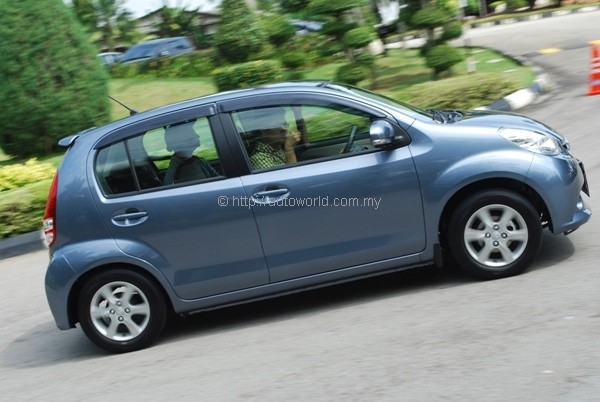 |
| Another nation’s favourite in the making? |
Prices & Variants
Perodua is launching the new Myvi with only a 1.3-litre motor on offer. The 1.0-litre 3-cylinder model has been dropped. As before, customers have the choice of manual or automatic transmission, and there are three trim levels to choose from – Standard, Premium, and Elegance – bringing the total number of variants to six. On-the-road prices inclusive of insurance start from RM43,900 for the 1.3SX manual with solid paint in Peninsula Malaysia.
Although a monthly sales target of 8,500 units has been set, 10,000 bookings have already been collected since order taking began on 4 June. As expected, the bulk of orders went to automatic transmission versions, accounting for 90% of orders. In terms of trim level, the mid-spec Premium model is the early pace-setter, making up 50% of orders. The Standard and Elegance variants account for 30% and 20% respectively.
For a long time, rumours have been abuzz in forums of a possible 1.5-litre variant of the Myvi. Perodua has thus far resisted calls for such a model, but the company’s officials are remaining coy on whether such a model is actually in the pipeline. If you are waiting for it, be prepared to pay through your nose as the current top-of-the-line 1.3EZE auto already goes as high as RM57,400 if you opt for metallic paint. You folks ready to pay RM60k for a Myvi?
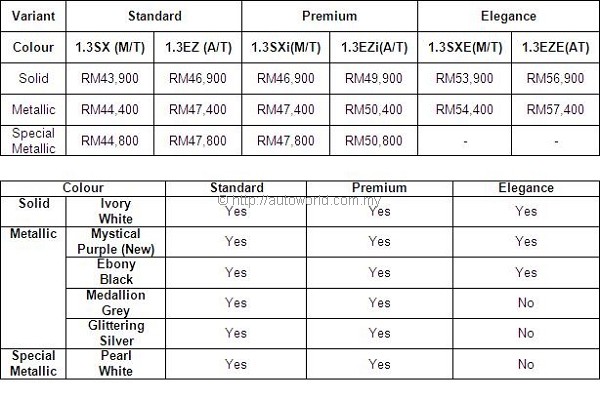 |
Technical Changes
Although Perodua has given the Myvi completely new sheetmetal, it has carried over the outgoing Myvi’s platform and mechanical bits. Compared to the previous Myvi, the new one has greater engineering involvement by Perodua and despite continued mechanical similarities with the Toyota Passo and Daihatsu Boon, the Myvi is claimed to be a uniquely Malaysian product.
Toyota and Daihatsu unveiled the new generation Passo/Boon in February 2010. Although the Myvi continues to bear a close resemblance, it no longer shares powertrains with its sister models. While the Passo & Boon has moved on to the newer Dual DVVT 1NR-FE engine, the Myvi soldiers on with the existing K3-VE motor, albeit with marginal performance gains.
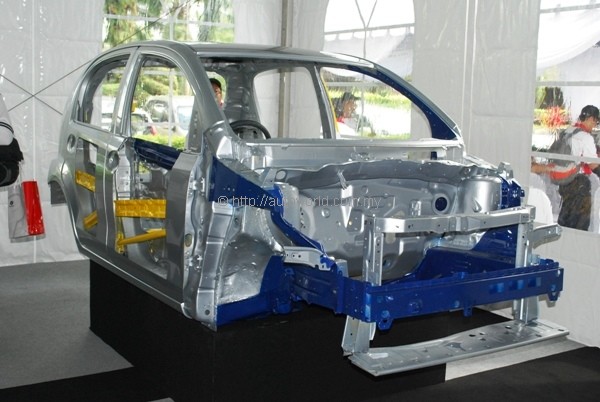 |
| Outgoing Myvi’s platform was reengineered for this new model. |
The engine now makes 90hp @ 6,000rpm and 117Nm @ 4,400rpm, up from the outgoing model’s 86hp and 116Nm, though it should be noted that the older tune delivers its peak torque at a much lower 3,200rpm. In-house testing by Perodua show improvements in consumption compared to the old Myvi. The manual version clocked a 4% improvement to register 17.5 km/l, whilst the auto version improved by 15% to get 14.6 km/l.
Although the Myvi’s platform is now a generation old, it has been injected with a number of updates to keep its specifications reasonably up-to-date. A renewed emphasis is placed on safety, with dual airbags now standard offering on all variants. That’s highly praiseworthy in this segment, but ABS and EBD are still excluded from the Standard model, due to cost considerations. Would you mind paying more for these items?
Other safety items bundled into the Myvi include seat-belt pre-tensioner and force limiter for the driver, ISOFIX child seat mounts, collapsible brake pedal, and collapsible steering column. The centre rear passenger is also given a three point seat-belt, with two buckles needed to fasten it. Perodua also claims that the Myvi is engineered to comply with European crash test standards. Its front structure even has built-in pedestrian protection, a notable first in our part of the world.
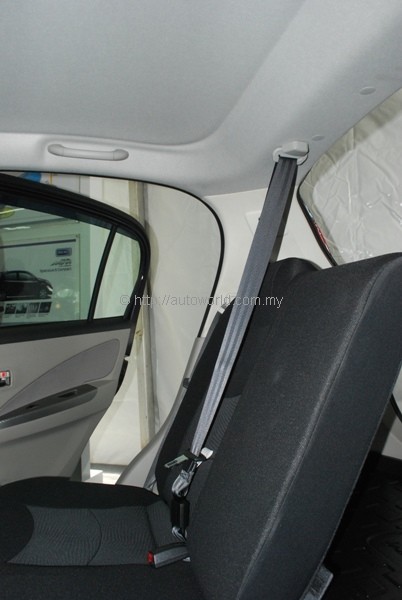 |
| Three-point belt for the centre rear passenger. |
Another notable change in the Myvi is the switch from hydraulic power assisted steering to electric, with the usual benefits in fuel consumption and maintenance cited as the reason behind its adoption. The new Myvi’s turning circle measures at a pleasing 4.7m. Brakes and suspension continue with the existing setup.
Exterior
Styling-wise, the Myvi has been given a complete makeover. The new model’s styling is a clear evolution of the old one, but more than just slapping a new bumper and a set of lights. Viewed from the side, the new Myvi has more pronounced character lines from its predecessor. The bumpers have also been incorporated with actual aerodynamic features – the front bumper is moulded with an air spat, whereas the rear bumper has an air vent on each side just below the reflectors.
Dimensionally, it has been shortened in length (3,750mm to 3,690mm) and height (1,550mm to 1,545mm). The old model’s 1,665mm width has been maintained, along with the 2,440mm wheelbase. Tyre and wheel sizes have also been maintained, with all variants shod with 175/65 R14 tyres. The Standard models make do with steel rims, whilst a set of new 6-spoke alloys adorn the other two variants.
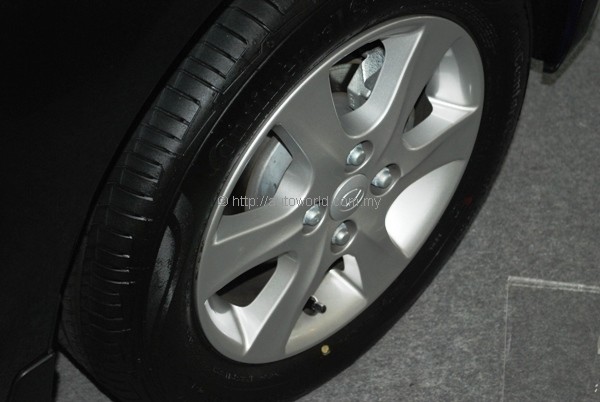 |
| Tyre and wheel size same as predecessor, but rim design changed. |
The first Myvi had a minor distinction for being the first locally produced vehicle to feature side-mirror-mounted signal lamps, and the new one continues with that little tradition. In place of the old model’s conventional bulbs, however, the new one gets LED blinkers. The mirrors themselves feature one-touch electric folding for on the Premium and Elegance models.
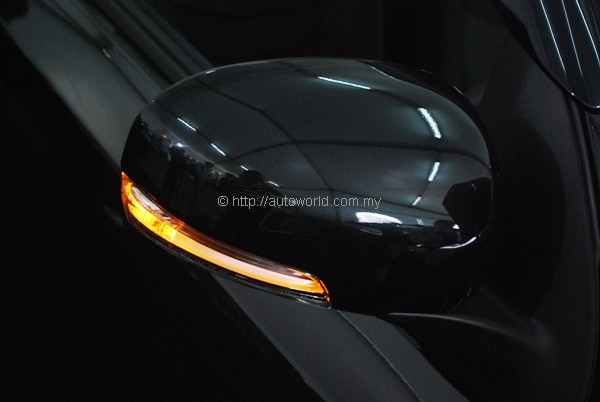 |
| Side-mirror mounted indicators now LED-illuminated. |
Interior
The one defining virtue of the original Myvi was how it was able to pack generous passenger room inside its compact bodyshell. There was more than enough leg and head room to fit five passengers without significant compromise in comfort. It is unsurprising, therefore, that Perodua sought to preserve as much of this trait as possible with the new Myvi.
Dimensionally, the new Myvi is slightly handicapped against its predecessor as interior width and height have decreased slightly. There is, however, a 15mm increase in interior length, which allowed Perodua to space the front and rear passengers slightly further apart. The so-called couple distance (space between driver and front passenger) has also been maintained from the outgoing model.
 |
| Rear luggage space has been slightly compromised for more passenger room. |
The dashboard has been thoroughly reworked, now bearing a passing resemblance to the Alza’s. The audio units are built in, and have varying features depending on trim level. Premium variants have USB and Bluetooth connectivity, and as a first in its price range, the Elegance model gets a full multimedia system with a 6″ touchscreen and built-in GPS. That’s bragging rights for you.
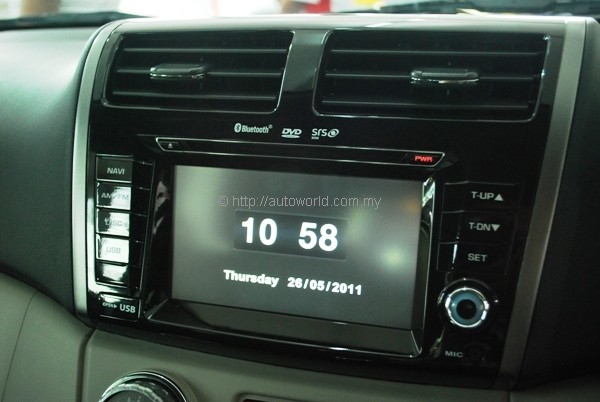 |
| Touchscreen navigator for Elegance model. |
In a practice that Perodua started with the Alza, manual and auto versions of the Myvi have their transmission levers mounted in different positions. Like the Alza, the manual gear lever is floor-mounted, whereas the auto gear selector is dashboard-mounted. Unlike the Alza, however, the Myvi actually uses the same dashboard and centre console pieces for both variants with the un-utilized slots used as storage cubbyholes.
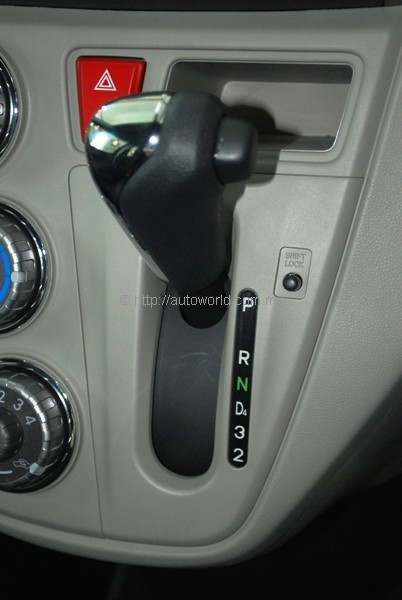 |
| Auto gear lever is dashboard-mounted and features Shift Lock button. |
Brief Driving Impressions
At the pre-launch media test drive held in Cyberjaya last month, yours truly found himself in the mid-spec 1.3EZi (Premium A/T) model. Depending on your choice of colour, prices of this variant, which is currently the range top seller and also our recommended pick, vary from RM49,900 to RM50,800 with insurance in Peninsula Malaysia. It sits RM3k above the Standard auto model (1.3EZ) and RM7k below the Elegance auto (1.3EZE).
The test cars on that day were all unregistered demo vehicles with trade plates, and the unit I was in had a little more than 500km on the clock. Our test route stretched just a tad longer than 5km, and also under highly controlled conditions. In that short drive, we found the Myvi to be an adequate performer like its predecessor.
On the flat grounds of our test route, the 1.3-litre DVVT engine and 4-speed auto needed some prodding to get the Myvi up to speed, so it might struggle on upward slopes. One comment we have on the auto gear selector is that the slots are placed too close to each other, so mis-selection might happen sometimes.
We did not get a good feel of its handling characteristics, but it rides comfortably. The electric steering is unengaging, but the previous Myvi’s success was not built on awesome driving dynamics anyway. As long as it is easy to drive, it’s not going to be a problem for its legions of potential owners. Expect another top seller in the making.
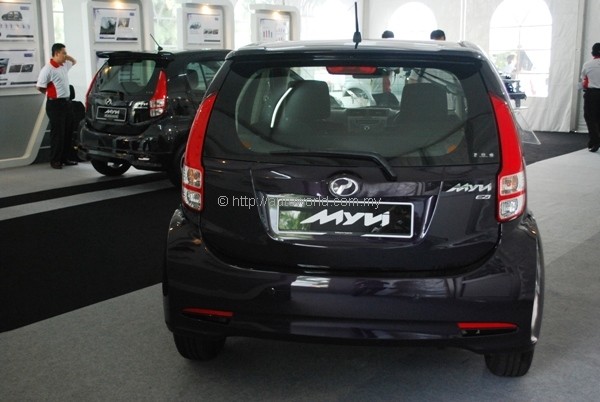 |
| Rear view of the new Myvi |
 |




